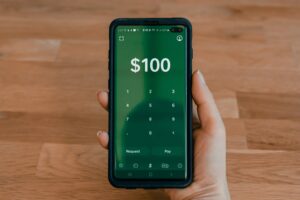Introduction
Mobile banking is the practice of conducting financial transactions via a mobile device, such as a smartphone or tablet. Mobile banking has gained popularity as cellphones and the internet have grown in popularity. Mobile banking has become a well-liked substitute for conventional banking procedures due to its accessibility and convenience. This article explores the advantages and disadvantages of mobile banking, highlights the various mobile banking services available, and discusses the future of mobile banking

Mobile banking
Benefits of mobile banking
Convenience: Customers can conduct financial transactions using mobile banking at any time and from any location. This implies that consumers can view their account information and conduct transactions without going to a bank branch or ATM. Those with restricted mobility or those who live in distant places may find this to be especially helpful.
Speed: Users can complete mobile banking transactions quickly, often in under a minute. This speed comes from the app’s fast-loading design and streamlined interface, which allows users to access the information they need with ease.
Security: Mobile banking is generally safe and secure when users take the necessary precautions. Most mobile banking apps use encryption and other security features to protect users’ financial and personal information.
Cost-effective: Mobile banking might be a less expensive option than standard banking procedures. Many banks provide free mobile banking services, which can help consumers cut costs on transaction charges and ATM fees.
Enhanced functionality: Mobile banking apps frequently include features not available through conventional banking channels. Customers can use their mobile devices, for instance, to deposit checks and make money transfers and bill payments.
Drawbacks of mobile banking
Security concerns : Mobile banking is typically thought to be safe and secure, although there is always a chance of fraud or identity theft. When utilizing mobile banking apps, users must take precautions to safeguard their personal and financial information.
Technical problems: There may occasionally be glitches or other problems with mobile banking apps that cause service to be interrupted. Customers may find this frustrating, especially if they need to finish a transaction that has a deadline.
Restricted functionality: Despite the numerous capabilities that mobile banking apps offer, they might not be able to carry out all of the same tasks as conventional banking methods. Customers might not be able to order new checks or access certain account information using, for instance, some mobile banking apps.
Dependency on technology: In order to use mobile banking, a working mobile device and a steady internet connection are required. Clients might not be able to use mobile banking services if they do not have access to these resources.
Types of mobile banking services
Mobile banking apps: Customers can download these stand-alone programs on their mobile devices for use with mobile banking. Apps for mobile banking include a number of capabilities, such as bill payment, money transfers, and account information.
SMS banking: Customers can conduct financial transactions via text messages with SMS banking. Those without smartphones or stable internet connections may find this to be especially helpful.
Mobile browser banking: Customers can access their accounts via a mobile web browser thanks to several banks’ mobile browser banking services. Customers who do not want to download a separate app may find this to be a decent solution.
Mobile payment systems: Customers can make purchases using their mobile devices with the help of mobile payment systems like Apple Pay and Google Wallet. These programs frequently connect to the credit cards or bank accounts of the users.
Future
Mobile banking will advance along with mobile technologies. Future developments in mobile banking could involve some of the following trends:
Improved security: To safeguard customers’ financial and personal information, banks will continue to invest in cutting-edge security measures.
More sophisticated features: Mobile banking applications will keep introducing fresh, cutting-edge features like voice-activated banking and augmented reality user interfaces.
Mobile banking will increasingly be combined with other technologies.

Leave a Comment